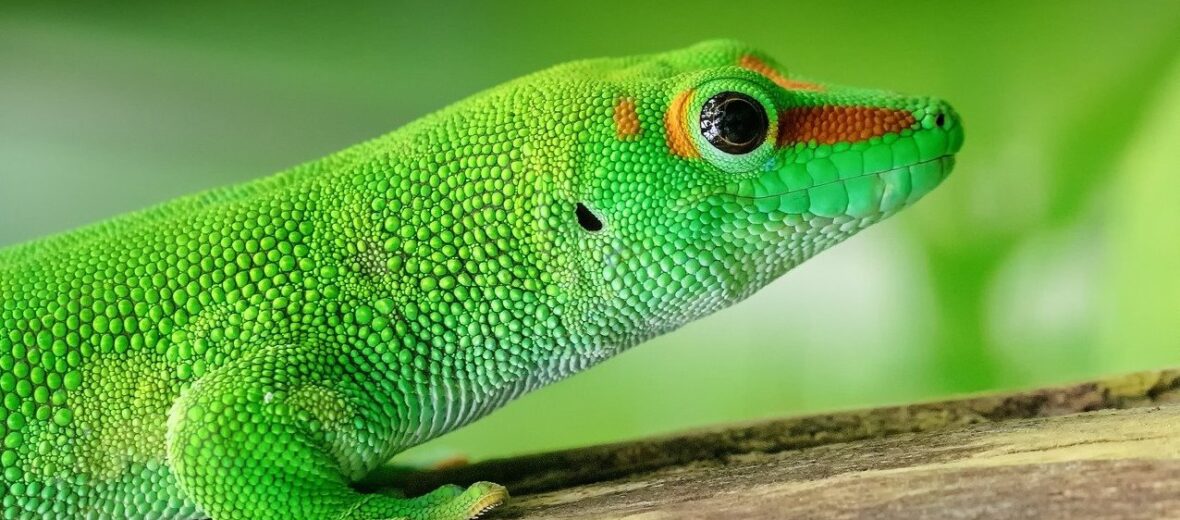
There are only a few species of geckos that dare to venture out in the light of day. The Madagascar day gecko is one of them. And no, they’re not out to save you 15% on your car insurance (American commercial joke there). These are among the prettiest of the known gecko species. Lime green with flecks and stripes of red, and also blue rings around their eyes. These geckos have a scientific name that is almost longer than they are. Due to their stable numbers, these geckos, both madagascariensis and grandis are listed as Least Concern by the IUCN.
First the Stats…
Scientific name: Phelsuma madagascariensis madagascariensis
Weight: Up to 2.5 ounces
Length: Up to 10 inches, including tail
Lifespan: Up to 15 years
Now on to the Facts!
1.) Like many geckos, they lack claws, but possess flaps of skin on their toes called lemellae. In between the flaps of skin are tiny hairs that utilize the principle of Van der Waals force to adhere to surfaces.
2.) This is where the tiny hairs on their toes (called setae) come into contact with various surfaces. Each seta splits off into hundreds of even smaller bristles called spatulae. A physical bond happens when electrons from the gecko hair molecules and electrons from the surface molecules interact with each other and thus create an electromagnetic attraction.
3.) Just like other geckos, they lack eyelids and instead have a special clear eye plate that protects their eyes from harm.
4.) These geckos are strictly arboreal (spend their lives in trees and bushes).
5.) As mentioned, the Madagascar day gecko is diurnal (active during the day).
But wait, there’s more on the Madagascar day gecko!
6.) Madagascar day geckos can be found at altitudes of up to 1,050 feet.
7.) They can be found in Madagascar, as well as Hawaii and the Florida Keys. In the United States they are an introduced species not yet classified as invasive.
Did you know…?
These critters get their water by licking moisture off of leaves and even off their eyeballs!
8.) Females lay 2 eggs several times a year.
9.) Like many reptiles, warmer egg temps yield mostly males while cooler egg temps yield mostly females.
10.) Insects, nectar, fruit, honeydew, and pollen make up their diet, with occasional smaller lizards added to the mix, on rare instances.
Now a Short Madagascar Day Gecko Video!
Also, check out the Critter Science YouTube channel. Videos added frequently!
Want to suggest a critter for me to write about? Let me know here.



